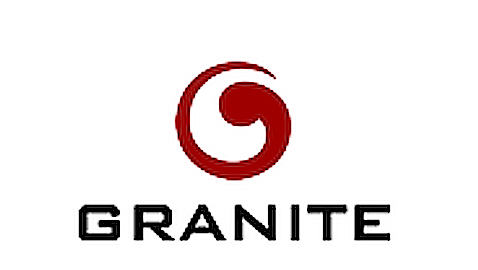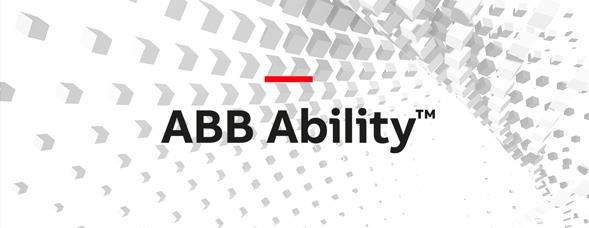Title Page
-
Conducted on
-
Prepared by
-
Location
EHS Monthly Inspection (Beginning of each month)
1. Noticeboards, signs and information
-
1.1 Are any EHS noticeboards clean and readable?
-
1.2 Are local fire safety signs, such as fire action notices suitably displayed?
-
1.3 Is the local Emergency Plan available, and where applicable a list of first aiders and fire marshals?
-
1.4 Are any locally mandated posters displayed, such as a Health and Safety Law poster?
2. General Office Safety
Floors
-
2.1 Is all Flooring in a good state of repair with no loose materials, debris, or signs of excessive wear?
-
2.2 Are floors kept clean and clear?
-
2.3 Are cables and cords kept clear of walkways?
-
2.4 Are the walkways free from any protruding equipment and supplies?
Stairways, corridors and balconies
-
2.5 Are they clear, undamaged, and unobstructed?
-
2.6 Is the lighting on stairs adequate?
-
2.7 Are the handrails in place and in good condition?
-
2.8 If there are balconies, are guardrails installed, maintained and free from damage?
Doors and Windows
-
2.9 Are all doors free from damage, open and fully closed? - Self-closers free from damage and leaks - Hinges firmly fixed
-
2.10 Are all fire doors kept closed or held open by authorised devices?
-
2.11 Are all fire doors and exits unlocked or fitted with authorised devices?
-
2.12 Are all windows clear and free from damage?
-
2.13 Are windows fitted and restrictors as required?
3. Working Environment
-
3.1 Are all lights in working order and lighting adequate for the working environment?
-
3.2 Are emergency light installed where necessary and do they appear to be in working order?
-
3.3 Is the temperature adequate for the working environment?
-
3.4 Does the indoor air quality appear to be sufficient? -Any complaints regarding air quality? - Visible dust - Strong odours
4. Fire Safety
-
4.1 Are fire extinguishers: - Serviced as required (usually every 12 months) - In good condition - Pressure gauge in green - Secured to wall or stand - Anti- tamper seals in place and unbroken?
-
4.2 Are local fire and emergency procedures available and understood by employees?
-
4.3 If a fire alarm panel is installed, is it free from faults?
-
4.4 Is local fire alarm testing completed and maintained as required?
-
4.5 Are the detectors and sprinklers free from obstructions?
-
4.6 If extension leads are used, are they used safely? - Mains sockets used were available? - Undamaged - Not daisy chained (linked to extension to extension) - Not overloaded
-
4.7 Are combustible items suitably stored away from ignition sources?
-
4.8 Are external storage and waste spaces suitably managed?
-
4.9 Are exit signs visible and illuminated as required?
-
4.10 Are fire exit routes, exit doors and walkways free from obstruction?
5. Storage
-
5.1 Are all storage areas in a safe state? - No items overhanging - Heavy items not stored at height
-
5.2 Is shelving in good repair and secured?
-
5.3 Are first aid kits available, stocked and easily accessible?
6. Work Equipment
-
6.1 Is all portable electrical equipment maintained, free from damaged and tested as required?
-
6.2 If a defibrillator is present, is it in good working order? - Free from damage - Stored and maintained in accordance with manufactures guidelines
-
6.3 Does all fixed electrical equipment appear to be in working order and well maintained? - Visual check if it does not put you at increased risk
7. Waste
-
7.1 Does the office have recycling facilities and these used correctly?
-
7.2 Are waste facilities adequate for the space?
-
7.3 If any hazardous waste is present, is this disposed of correctly?
8. Welfare Facilities
-
8.1 Are toilet areas and break rooms clean and tidy?
-
8.2 Is there hot and cold running water for washing hands?
-
8.3 Is clean drinking water available?
-
8.4 Are taps and showers regularly used and cleaned?
Food Safety
1. Deliveries
-
1.1 Are food deliveries been checked? <br><br>Food delivery temperature to be recorded, food that need to be refrigerated, to be properly stored in 30 min. Check for evidence that any delivery has not been properly stored or managed.
2. Personal Hygiene and Handwashing
-
2.1 Safe food handling practices, including frequent hand washing of food handlers, sanitiser gel available.<br><br>Check the overall practices in the kitchen, are food handlers washing hands frequently and in between tasks, upon re-entering the kitchen areas etc.
-
2.2 Wash hand basin fully stocked with hot & cold water, antibacterial soap, paper towel etc<br><br>All hand wash sinks should have hot and cold water. Hot water should be warm but not scalding.
-
2.3 Food items stored correctly. High risk under low risk items, no open containers etc.<br><br>Special attention to be given to high risk foods items such as raw meat or fish and items with allergens such as fish, nuts and sesame seeds so they should be stored in a way that will not cross contaminate other foods.
-
2.4 Foods are correctly covered, dated, protected from contamination and within shelf-life or best before date.
-
2.5 Contact surfaces (food surfaces, floors, walls & ceilings) within kitchen area clean and well maintained?
-
2.6 No evidence of pests, door and windows shut to prevent access?
-
2.7 Evidence of appropriate Temperature monitoring - Daily fridge/freezer, cooking and re-heating checks. <br><br>All fridges and freezer temperatures should be recorded daily. For food, only a sample of the cooked or reheated items needs to be recorded daily.
-
2.8 Fitness to work policy understood and adhered to.<br><br>Fitness policy means nobody is working in a food prep area sick with symptoms of food poisoning, coughing or sneezing on the food.
-
2.9 Adherence to company uniform (jewellery policy, clean uniform, hat in kitchen, smoking policy etc.)<br><br>Overall food handlers need to demonstrated high standards of personal hygiene. Clean nails, hair tied up, not wearing strong perfume or aftershave, only wedding bands allowed etc.
-
2.10 Chemicals stored and used correctly, following correct dilution rates and contact times. <br><br>Are good practices been adhered too, sanitiser not being sprayed on surfaces close to the food, all chemical bottles must have labels. Chemicals not stored close to food items. Chemicals safety data sheets available for all the items used in the kitchen.
3. Chilled & Frozen Storage (Fridges and Freezers)
-
3.1 Organised stock rotated & safe storage (external packaging removed, defrosting in designated area etc)
-
3.2 Clear separation & knowledge of high risk products stored here <br><br>Raw meat, fish, to be stored separated from raw vegetables or ready to eat items.
-
3.3 Interior floor, walls and racking are clean and in good condition?
-
3.4 Foods are correctly covered, dated and within Shelf-life?
4. Storage
-
4.1 All Contact surfaces (and floors, walls & ceilings, racking etc) within area well maintained?
-
4.2 Dry Store - Products here are stored safely (high risk separation, items off floor, etc.)
-
Dry Store - Clear effective stock rotation in place within storage areas (FIFO)<br><br>First In/ First Out rule where items expiring first are stored to be used first.
5. Allergen Management
-
5.1 Items stored to avoid allergenic contamination<br><br>Items such as nuts, sesame seeds must be stored below other items or in closed containers.
-
5.2 Allergen process understood throughout the team.<br><br>Is there a specific process of allergen separation to be followed when preparing the food?
-
5.3 Allergen training complete for all relevant team members
6. Structural: Equipment, Paperwork and Policies
-
6.1 Safe practices for storage & disposal of broken glass, broken glass/crockery containers available?
-
6.2 Items stored on racking without compromising safety?
-
6.3 All dangerous equipment positioned, has signage, carried and used appropriately, unplugged when not in use?
-
6.4 Wet Floor signs in use?
-
6.5 First Aid box correctly stocked (blue plasters etc.) and sited appropriately and as stated by branch?
-
6.6 No Smoking policy adhered to and appropriate external smoking area (which is also managed)<br><br>Food handlers must remove uniform or cover uniform if going outside to smoke. Hand washing upon re-entering the kitchen after a smoke break is mandatory.
-
6.7 Probe thermometer in use, accurate & in good working order, clean and wet probe wipes available<br><br>Check if the probe wipes are moist - if they are dry out they can be sprayed with sanitiser.
-
6.8 General kitchen equipment clean and in good condition?
-
6.9 Chopping boards & kitchen utensils in use are in hygienic condition?<br><br>Check for signs of wear and tear in chopping boards - if they start to lose the color they should be replaced.
-
6.10 Different chopping boards are available for different food items such as red for raw, yellow for cooked, green for vegetables..
-
6.11 Cleaning equipment and chemicals stored correctly and well maintained (with data sheets, notices displayed)
-
6.12 All due diligence paperwork and food safety documents being kept organised and in good condition?<br><br>Due diligence documents are all the docs used to record information such as temperature checks, open and close checks, cleaning checks.
-
6.13 Is there any evidence of pests?<br><br>ie: check for signs of pest issues and that any pest deterrant equipment is working, latest pest report is available.
-
6.14 Are there any maintenance issues that need to be reported?
7. Lunch Service
-
7.1 Are the plates and clutery clean? <br><br>Check the plates and clutery for any signs that they were not fully cleaned and sanitised in the dishwasher.
-
7.2 Have the surfaces where the food is displayed been fully sanitised before service?
-
7.3 Is food kept covered before the beggining of the service?
-
7.4 Is food not being left ambient for too long before the beggining of service? <br><br>Note that food should only be kept ambient for a maximum of 4 hours, after it must be discarded.
-
7.5 If food is reheated on site, has temperature checks being carried it out before serving? <br><br>Food needs to be reheated to a certain temperature to be deemed safe i.e minimum 75*C in most locations.
8. Food & Drinks Pantry - Safety
-
8.1 When replenishing the items is the vendor following the FIFO system? <br><br>"FIFO" stands for First In, First Out which means items that are expiring first are put at the front to be consumed first.
-
8.2 Is the equipment in the pantries clean? <br><br>i.e: microwave, dishwasher, taps, sinks and surfaces.
-
8.3 Are there any maitenance issues that need to be reported?
-
8.4 Are the fridges seals clean?
-
8.5 Washing and drying facilities in the pantry fully equiped? <br><br>i.e: ensure it is possible to wash and dry hands nearby the pantries, and there are paper tissues available.
-
8.6 Bins are frequently emptied?
-
8.7 Are food and drinks being appropriately stored? <br><br>Food and drinks stock should be stored at least 6 inches/15cm from the floor.










